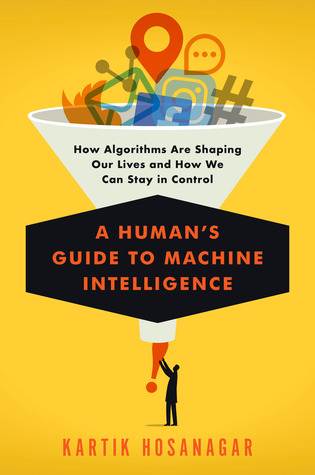
A Human's Guide to Machine Intelligence
How Algorithms Are Shaping Our Lives and How We Can Stay in Control
کتاب های مرتبط
- اطلاعات
- نقد و بررسی
- دیدگاه کاربران
نقد و بررسی

February 1, 2019
This first solo book from Hosanagar (John C. Hower Professor of Technology and Digital Business and Professor of Marketing, Wharton Sch., Univ. of Pennsylvania)seeks to answer why algorithms behave in unpredictable and potential harmful ways, moving the conversation away from programmers' intentional biases to AI-based algorithms that develop their own logic independently. Hosanagar argues that we can no longer avoid understanding these complex technological developments. First, examples of algorithmic misdeeds (both new and known) are presented, representing the extent to which we assume tech's neutrality with choices of what we read or videos we stream. The author raises an important question: How do algorithms change human decision-making? Next, he attempts to boil down differences between machine learning and deep learning models with intriguing examples, but not quite as effectively as one would have hoped. Computer scientists don't fully understand what happens within the algorithmic functionality they create, says Hosanagar. However, his "predictability-resilience paradox" is conveyed convincingly. He excels in arguing for an algorithmic bill of rights, one based on the original ideal of self-regulation by government and by individuals. VERDICT Algorithmic decision making and its influence in our lives requires our attention and study. This is a relatively easy, introductory read on the topic.--Nancy Marksbury, Keuka Coll., Keuka Park, NY
Copyright 2019 Library Journal, LLC Used with permission.

February 1, 2019
The algorithms are coming, whether the world is ready for them or not--and whether the algorithms are ready for prime time."As machines become more intelligent and dynamic," writes Hosanagar (Technology and Digital Business/Wharton School of the Univ. of Pennsylvania), "they also become more unpredictable." Thus arises a built-in conundrum in designing algorithms, the basis of artificial intelligence. Sometimes, notes the author, the algorithms--human constructs, aided by machine learning--"behave in unpredictable, biased, and potentially harmful ways" that speak to the law of unintended consequences. As Hosanagar notes by way of example, the Google self-driving car is based on algorithms that in turn are based on rules not programmed by humans directly but instead "trained on a database of videos of humans driving" that allow it to arrive at "its own driving policy using machine learning." A self-driving car that learns like a teenager in a driver's education class may not inspire confidence, but, as Hosanagar observes, the algorithm has driven millions of miles in training, something almost no human has ever done. Machine learning is thus supplanting former expert-systems approaches in many areas. In the main, Hosanagar suggests, algorithms are doing their job of serving humankind, but they can pose dangers, as with the Facebook models that construct echo chambers in the place of conversation pits. Little of the author's discussion will come as a surprise to anyone who keeps up with tech news. The most useful part of the book is Hosanagar's "algorithmic bill of rights," which would give consumers insight into the AI that surrounds them, if not some measure of control. One of the pillars contains the clause that anyone "impacted by decisions made by algorithms should have a right to a description of the data used to train them and details as to how that data was collected."Of some interest to students of technology and society, though less compelling than recent books by Jaron Lanier, Edward Tenner, and other critics.
COPYRIGHT(2019) Kirkus Reviews, ALL RIGHTS RESERVED.

























دیدگاه کاربران